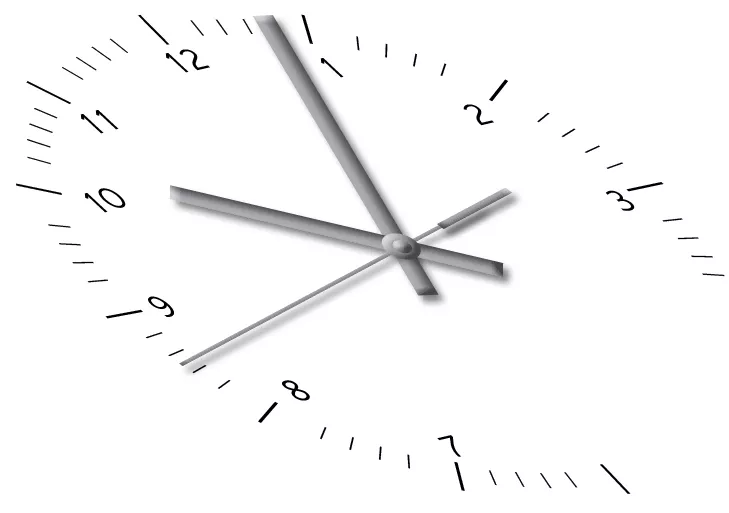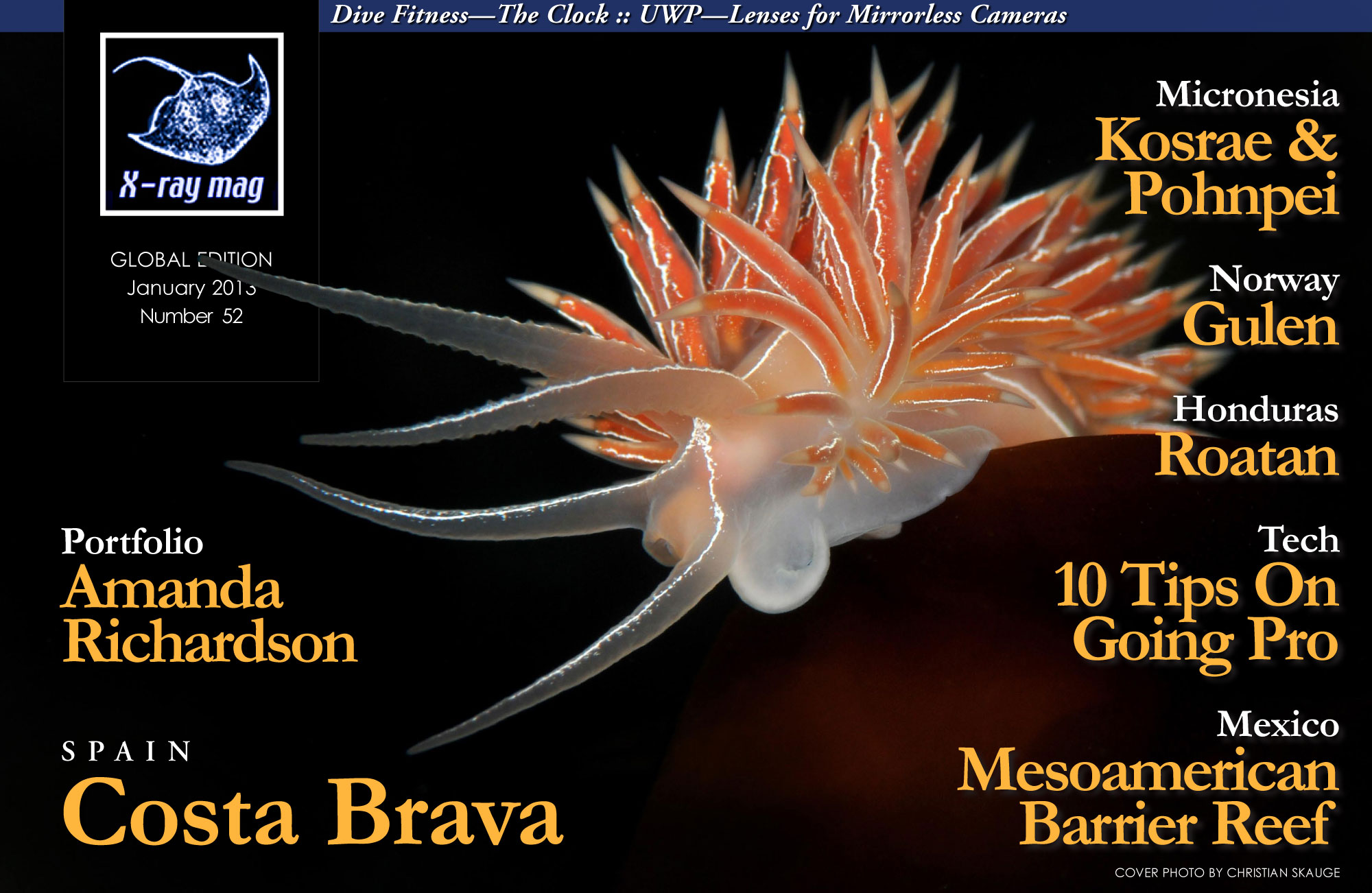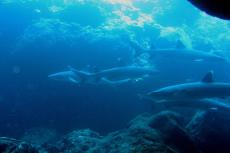Tick tock tick tock. Have you ever heard someone say, “There goes 15 minutes of my life I will never get back?” While there are many different philosophies and applications of time, most divers don’t want to waste it. Instead, divers carefully invest some of their precious time, energy and money planning and preparing for their ideal SCUBA experience.
Contributed by
In fact, divers seem to have their own built-in water clocks pouring over dive logs, recording time in and time out of the water, bottom time and surface intervals, and adding up the flow of minutes as a measure of experience. Underwater photographers devote hours of their time dedicated to freeze-framing that perfect fluid moment. Even professionals that have spent years of their lives exploring the oceans of the world still can’t get enough. Racing the clock or watching the clock, divers simply want more dive time.
Participating in daily exercise is an investment of time divers can make for themselves that comes with big payoffs. Physical fitness improves the health of divers, which can extend dive time and add years to the diver’s lifespan.
A diver certified at 20 years of age has the potential for more than 50 years of scuba diving. During this diving lifespan many biological changes will occur. Beginning in early adulthood all body systems begin to lose capacity; muscle strength decreases, cardiovascular capacity diminishes, and body composition changes. Clearly, illness should not be confused with aging however, changes in the body due to aging are of great concern when combined with illness, injury or a sedentary lifestyle.
There are many theories of aging, but only physical activity is wholly agreed to reverse the effects of aging. As with diving and any activity, there are risks associated with exercising. Fortunately the benefits of physical fitness far outweigh the risks associated with exercise and greatly reduce the risks associated with diving. As the body ages, workouts can be modified to minimize risk and maximize results. Exercise is the great equalizer. A fitness lifestyle may extend biological health by as much as 20 years.
More efficient use of air is perhaps the most significant benefit of exercise that can extend dive time. Physiological adaptations as a result of exercise increase aerobic capacity, improve the ability of muscle cells to utilize oxygen, enhance the body’s ability to transport oxygenated blood to the muscle cells and carbon dioxide away from the cells, strengthen and train the heart to pump more blood, and metabolize stored body fat as a primary source of energy helping to maintain healthy body composition.
Physical fitness for diving increases endurance and reduces fatigue, facilitates carrying less weight, improves mental acuity, reduces the risk of decompression sickness (DCS), improves agility on boats and uneven terrain, improves comfort and movement on the surface and underwater, improves fin-kick efficiency and overall diving performance.
A balanced exercise program incorporates resistance training for strength, aerobic training for cardiovascular fitness, stretching for improved flexibility and injury prevention, and good nutrition.
The Clock is an advanced exercise requiring good leg strength, torso stability and flexibility in the torso, hips and shoulders. Beginners may wish to practice the Split Stance Squat to develop a foundation before progressing to The Clock. Review and follow the biomechanics, form, breathing, and precautions of the Split Stance Squat.
Equipment: A weighted medicine ball adds challenge to the exercise and assists the rotation of the torso. The exercise may be performed without weight with the hands clasped together.
Getting started: Imagine two clocks aligned with each other one below the feet and another above the head. Stand in the center of the clocks in a split front-to-back stance with the right foot forward, feet about hip width apart and 12 o’clock directly in front. Hold a weighted medicine ball between both hands with fully extended arms. Drop into a lowered Split Stance Squat position and remain in this lowered stance throughout the exercise.
Form and breathing: To begin, inhale while reaching down and across the front knee pointing the medicine ball toward 1 on the imaginary clock below. Slowly begin to exhale and with controlled motion rotate the torso sweeping arms like the hands on a clock to 7 o’clock above. When turning the torso at the waist work to keep the hips pointing forward. Keep eyes on the ball at all times turning the neck and head to keep them in line with the spine.
Resist the urge to stand up. Continue the exercise by inhaling while sweeping the arms back down to 1 o’clock below. Repeat for one minute and return to the standing position. Now switch legs front-to-back so that the left knee is forward. Perform the exercise for the other side of the body reaching across the left knee down and toward 11 o’clock below. Then sweep the arms diagonally up toward 5 o’clock above.
Remember to inhale at the start and during the downward movement of the exercise. Exhale during the upward sweep. Remember to keep the arms fully extended throughout the range of motion.
The Split Stance Squat is a great exercise for strengthening the legs and stabilizing the core. Maintaining balance and coordination during this exercise engages the abdominals, back, hips, buttocks, legs and mind.
Beginners: Hold onto a chair or railing to practice this exercise. Initially, body weight may be enough of a challenge. In time adding additional weight and standing free from support moves this exercise to its advanced form. This exercise is NOT performed as a lunge. Knee complications that exclude lunges may not a problem with this exercise when performed correctly.
Form and breathing: Stand in a forward-to-back split stance as shown. Feet should be hip width apart as if walking in an extended stride. Contract your abdominals and inhale while lowering the body by bending the knees to 90°. From the squat position, contract all the muscles of the lower body and the torso and exhale while returning to the starting position. In particular, the gluteal muscles (buttocks) extend the hip joint while the quadriceps muscles (front of the thigh) extend the knee joint.
Repetitions: Depending on individual strength and endurance perform the exercise between ten and 25 repetitions with each leg. Repeat two to four times on each leg.
Precautions: Keep the front knee behind the toes, ideally over the ankle. Do not lock-out the knees or look down. The back knee (as much as possible) should align directly below the hip allowing for a 90° bend at the ankle. Work to adjust the stance so that the back knee aligns directly below the hip with as close to a right angle at the ankle as possible. If the position is not perfect, a slight adjustment of the upper body may bring it into alignment. If it doesn’t, return to the starting position and adjust the starting stance front-to-back for proper alignment.
Gretchen M. Ashton is registered with the National Board of Fitness Examiners. An advanced diver, International Sports Sciences Association Elite Trainer, and world champion athlete, Ashton developed the ScubaFit® program and the comprehensive FitDiver® program, which includes the first mobile app for scuba diver fitness. Ashton is the co-author of the PADI ScubaFit Diver Distinctive Specialty course. For more information, visit: Scubafit.com
Published in
- Log in to post comments




























